Changes in beta cell function occur in prediabetes and early disease in the Lepr (db) mouse model of diabetes
- PMID: 27048248
- PMCID: PMC4869737
- DOI: 10.1007/s00125-016-3942-3
Changes in beta cell function occur in prediabetes and early disease in the Lepr (db) mouse model of diabetes
Abstract
Aims/hypothesis: Type 2 diabetes is a progressive disease that increases morbidity and the risk of premature death. Glucose dysregulation, such as elevated fasting blood glucose, is observed prior to diabetes onset. A decline in beta cell insulin secretion contributes to the later stages of diabetes, but it is not known what, if any, functional beta cell changes occur in prediabetes and early disease.
Methods: The Lepr (db) mouse (age 13-18 weeks) was used as a model of type 2 diabetes and a two-photon granule fusion assay was used to characterise the secretory response of pancreatic beta cells.
Results: We identified a prediabetic state in db/db mice where the animals responded normally to a glucose challenge but have elevated fasting blood glucose. Isolated islets from prediabetic animals secreted more and were bigger. Insulin secretion, normalised to insulin content, was similar to wild type but basal insulin secretion was elevated. There was increased glucose-induced granule fusion with a high prevalence of granule-granule fusion. The glucose-induced calcium response was not changed but there was altered expression of the exocytic machinery. db/db animals at the next stage of disease had overt glucose intolerance. Isolated islets from these animals had reduced insulin secretion, reduced glucose-induced granule fusion events and decreased calcium responses to glucose.
Conclusions/interpretation: Beta cell function is altered in prediabetes and there are further changes in the progression to early disease.
Keywords: Beta cell; Compound exocytosis; Exocytosis; Insulin granules; Islets; Prediabetes; Progression.
Figures
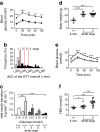
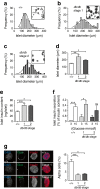
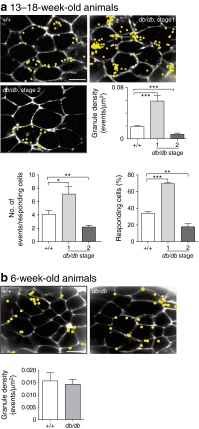
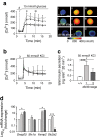
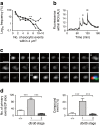
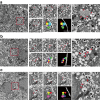

Similar articles
-
Metallothionein 1 negatively regulates glucose-stimulated insulin secretion and is differentially expressed in conditions of beta cell compensation and failure in mice and humans.Diabetologia. 2019 Dec;62(12):2273-2286. doi: 10.1007/s00125-019-05008-3. Epub 2019 Oct 17. Diabetologia. 2019. PMID: 31624901
-
The secretory deficit in islets from db/db mice is mainly due to a loss of responding beta cells.Diabetologia. 2014 Jul;57(7):1400-9. doi: 10.1007/s00125-014-3226-8. Epub 2014 Apr 6. Diabetologia. 2014. PMID: 24705605 Free PMC article.
-
Capillary contact points determine beta cell polarity, control secretion and are disrupted in the db/db mouse model of diabetes.Diabetologia. 2024 Aug;67(8):1683-1697. doi: 10.1007/s00125-024-06180-x. Epub 2024 May 30. Diabetologia. 2024. PMID: 38814445 Free PMC article.
-
MicroRNAs and the functional β cell mass: For better or worse.Diabetes Metab. 2015 Nov;41(5):369-77. doi: 10.1016/j.diabet.2015.03.006. Epub 2015 Apr 22. Diabetes Metab. 2015. PMID: 25910875 Review.
-
Pulsatile insulin secretion, impaired glucose tolerance and type 2 diabetes.Mol Aspects Med. 2015 Apr;42:61-77. doi: 10.1016/j.mam.2015.01.003. Epub 2015 Jan 28. Mol Aspects Med. 2015. PMID: 25637831 Free PMC article. Review.
Cited by
-
Hepatic gene expression variations in response to high-fat diet-induced impaired glucose tolerance using RNAseq analysis in collaborative cross mouse population.Mamm Genome. 2019 Oct;30(9-10):260-275. doi: 10.1007/s00335-019-09816-1. Epub 2019 Oct 24. Mamm Genome. 2019. PMID: 31650267
-
Proteomic pathways to metabolic disease and type 2 diabetes in the pancreatic islet.iScience. 2021 Sep 9;24(10):103099. doi: 10.1016/j.isci.2021.103099. eCollection 2021 Oct 22. iScience. 2021. PMID: 34622154 Free PMC article.
-
The Association Between an Addictive Tendency Toward Food and Metabolic Characteristics in the General Newfoundland Population.Front Endocrinol (Lausanne). 2018 Nov 9;9:661. doi: 10.3389/fendo.2018.00661. eCollection 2018. Front Endocrinol (Lausanne). 2018. PMID: 30473679 Free PMC article.
-
ABCA12 regulates insulin secretion from β-cells.EMBO Rep. 2020 Mar 4;21(3):e48692. doi: 10.15252/embr.201948692. Epub 2020 Feb 18. EMBO Rep. 2020. PMID: 32072744 Free PMC article.
-
Nutrient Sensor mTOR and OGT: Orchestrators of Organelle Homeostasis in Pancreatic β-Cells.J Diabetes Res. 2020 Dec 16;2020:8872639. doi: 10.1155/2020/8872639. eCollection 2020. J Diabetes Res. 2020. PMID: 33457426 Free PMC article. Review.
References
Publication types
MeSH terms
Substances
LinkOut - more resources
Full Text Sources
Other Literature Sources
Molecular Biology Databases
Miscellaneous

